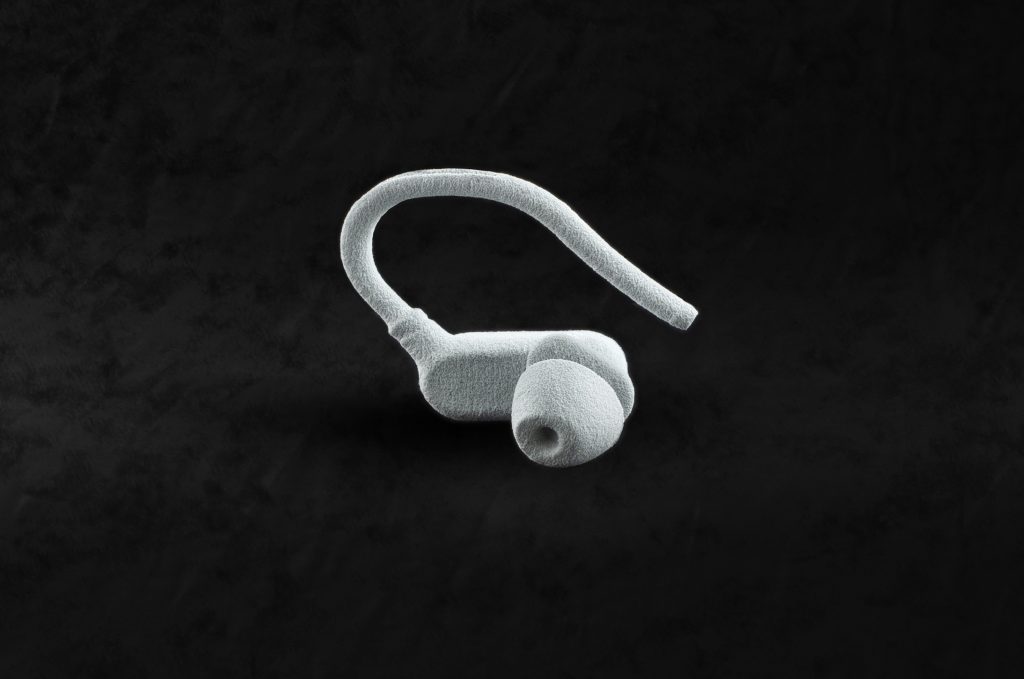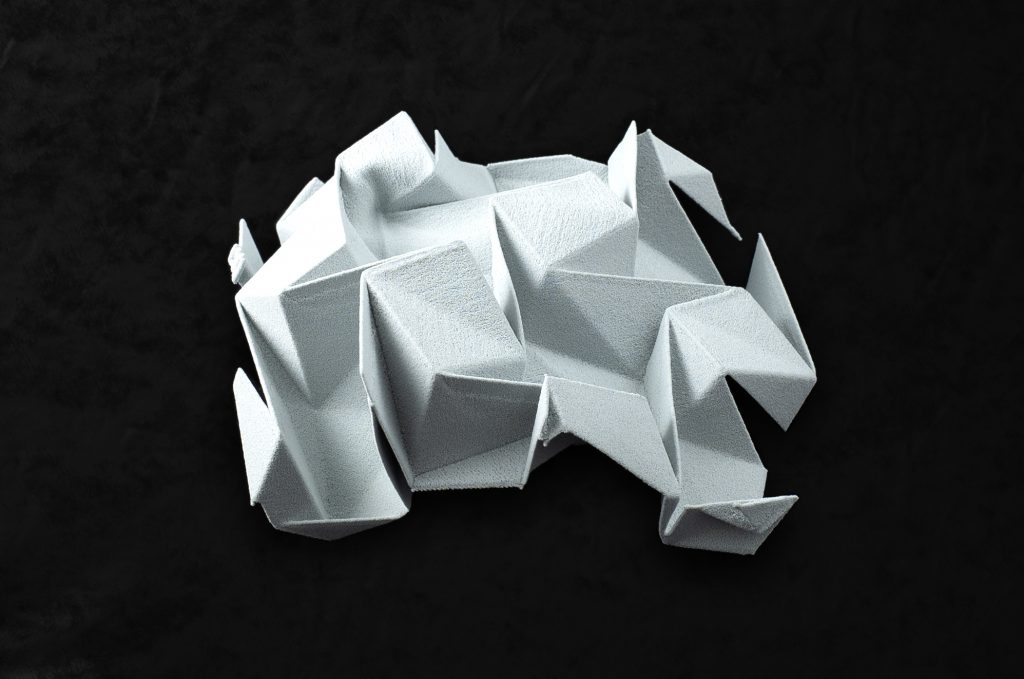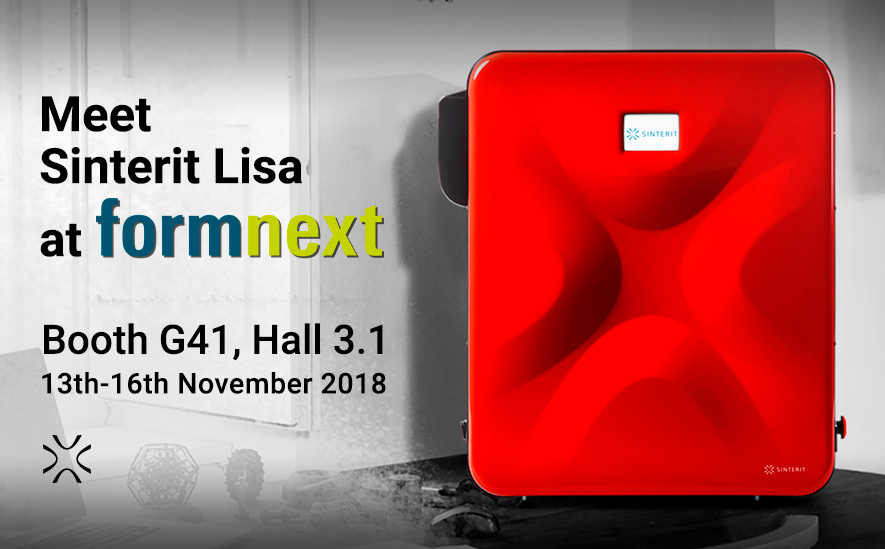
Is it possible to achieve white color on a small SLS 3D printer? This question was asked a hundred times. Somehow clients love white materials, but in selective laser sintering technology, it was usually connected with big, industrial machines. Out of range for many SMEs. Now, Sinterit decided to change it and provide the first TPU material that is as close to the white color as it is possible, preserving the material’s properties at the same time.
Flexa Bright allows printing almost white, flexible objects with two levels of hardness, depending on your choice. It is a functional rubber used in applications when nice looking color is essential.

“We love our grey and black powders, which were a kind of benchtop SLS status quo for so many years now” – says Konrad Głowacki, company co-founder. “But with this white rubber, we are opening our products for a whole new range of applications, especially in medicine or fashion industry” he adds.
The white color has been an industry standard since the beginning of selective laser technology invention. Especially the professionals, with years of experience in 3D printing on industrial machines, were used to the white powder, so it has been a little bit harder for them to accept grey or black printouts. On the other hand, users of small SLS 3D printers are used to dark prints. With Flexa Bright, Sinterit is giving the solution which will please all.
Flexa Bright properties
As a rubber-like material, Flexa Bright has an outstanding elongation at break of about 317[%], and it has the ultimate tensile strength of 10[MPa], according to PN-ISO 37:2007. With the average hardness value of 79 in Shore type A scale by PN-EN ISO 868:2005, we can classify it as a medium hard material. The water absorption of Flexa Bright is about 3%, according to PN-EN ISO 62:2008.

“I love the new white flexible material properties from Sinterit Lisa. I can see many uses for it, but the first thing that comes to mind is not even white, but color. Yes. It will open up a new chapter in desktop laser sintering where adding pigments later on in the game, opens up this possibility as well” says Janne Kyttanen, a pioneering digital sculptor creating multidisciplinary work at the intersection of 3D printing, virtual & augmented reality.

What can you do with Flexa Bright?
It is suitable for prototyping fabric, clothes or creating items needed in medicine, especially in pre-surgery and training printouts in the medical industry, as well as in architecture or luxury industry. It is perfect for flexible prototypes, clothing parts, mock-ups, and models.
The company will be present at the Formnext in Frankfurt, Germany (from November 13-16th, booth G41, Hall 3.1), with its SLS additive manufacturing system. As for now, the company has in its offer PA12, PA11 Onyx and four TPU materials – Flexa Black, Flexa Grey, Flexa Soft and Flexa Bright. If you would like to schedule a meeting with Sinterit’s team or get a free ticket for the Formnext, you can still register for it here.

About Sinterit
Sinterit is the first manufacturer of desktop selective laser sintering 3D printers, with a mission to accelerate the world’s development by giving everyone access to innovative 3D printing SLS technology. It focuses on ease of use, versatility, and availability so that tomorrow can happen today. The company, founded by former Google employees with experience in the industry since 2014, delivers reliable, high-precision printers to customers around the world. During its four years on the market, Sinterit LISA has printed thousands of 3D products. For more information visit www.sinterit.com or follow @Sinterit on Facebook, Twitter or watch our new film on YouTube.
For More information:
Michał Krzak
Marketing Communication Manager, Sinterit
michal.krzak (at) sinterit.com
Subscribe to Our Email Newsletter
Stay up-to-date on all the latest news from the 3D printing industry and receive information and offers from third party vendors.
You May Also Like
3D Printing Unpeeled: New Arkema Material for HP, Saddle and Macro MEMS
A new Arkema material for MJF is said to reduce costs per part by up to 25% and have an 85% reusability ratio. HP 3D HR PA 12 S has been...
3D Printing News Briefs, January 20, 2024: FDM, LPBF, Underwater 3D Printer, Racing, & More
We’re starting off with a process certification in today’s 3D Printing News Briefs, and then moving on to research about solute trapping, laser powder bed fusion, and then moving on...
3D Printing Webinar and Event Roundup: December 3, 2023
We’ve got plenty of events and webinars coming up for you this week! Quickparts is having a Manufacturing Roadshow, America Makes is holding a Member Town Hall, Stratafest makes two...
Formnext 2023 Day Three: Slam Dunk
I’m high—high on trade show. I’ve met numerous new faces and reconnected with old friends, creating an absolutely wonderful atmosphere. The excitement is palpable over several emerging developments. The high...































